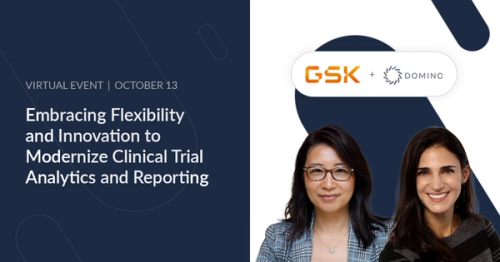How Harvard's case method can bridge the gap between Business and Data Science
Karina Babcock2020-03-04 | 11 min read

As companies power up model development, data science teams are going into overdrive to better connect and communicate with business leaders. Firms are launching data literacy programs, conducting data science town halls, and hosting monthly learning sessions, among other activities to help business teams better understand what data science is and what it can do.
But as firms work to educate their business leaders on topics of data science, machine learning, and analytics, the big question is:
How can they most effectively help non-technical folks “get” data science?
According to Harvard University’s Yael Grushka-Cockayne, the “case method” of instruction—a core of Harvard’s teaching for almost a century—offers a powerful approach to engage business managers and help them understand data science in a business context. Yael is an award-winning teacher and named one of “21 Thought-Leader Professors” in Data Science. Her research and teaching activities focus on data science, forecasting, project management, and behavioral decision-making.
In this blog, we share an edited version of our conversation with Yael on the case method and how data science teams can use it.
What is the case method?
Yael Grushka-Cockayne: The case method is a Socratic student-led system where students review a case (a story about how an organization faced a specific business problem) and have to think through possible solutions and what they would do in the same situation.
Unlike other teaching methods, there is no lecturing with the case method. We ask students pointed questions about the case, and learning emerges through the students’ discussion as they debate and test the different courses of action that could have been pursued. Harvard is the leader in using the case method to its fullest.
Why do you advocate this approach for teaching data science to managers?
Yael Grushka-Cockayne: I believe the case method is one of the best ways to teach data science because you are directly tying data science to a business problem that the company is trying to solve.
Students come into the classroom embracing the conversation around what they think that the company should do. What data will they need? What models can solve the challenge? How do you use the insights from your analysis to push things forward?
It encourages brainstorming and real-world problem solving as participants have to figure out the best solution. And when participants discover together how to overcome a business problem, it becomes more memorable, and they will draw on those memories more readily once they return to the office.
It gives business leaders a safe space to test ideas and learn other perspectives from colleagues in the room. Often there isn’t a right or wrong. There’s going to be different ways to tackle a problem. There are some mistakes that we want to avoid, but there are a lot of good approaches to solving a business problem, and that’s all welcome in the classroom.
It helps them understand their role in the process and how they can contribute and interact with the data science team to progress the work. This includes everything from how they think about the business problem to what their part is in collecting data, testing hypotheses, and bringing models to production.
Finally, it helps participants communicate better when working with other disciplines. How many times have you been in a room with a business person and a coder, and they’re not getting anywhere? Effective communication requires some practice and skill, and the case method environment encourages more attention to how you interact with others, how you ask the questions, and how you answer those questions to build these skills.
Given the unstructured format, how do you ensure you’re advancing the conversation?
Yael Grushka-Cockayne: The case method encourages what we call the four Ps, and these are crucial to the problem-solving process:
- Preparation. The quality of the discussion depends on participant preparation. Before the class, they have to read the case, run the code we assign, and come prepared to talk about what the code did the night before.
- Participation. Class participants must be ready to both contribute and listen carefully to each other, and make comments to advance the discussion. Participants must be proactive, not passive.
- Presence. There is a single conversation in the room, and everyone is involved. To this end, we call on students regularly, asking them questions about the case and ideas that others have shared to ensure to keep everyone on their toes.
- Professionalism. We ask participants to disagree with ideas, not with individuals. They should be ready to walk everyone through their analysis and debate and argue points in an easy to understand and professional manner.
So, if a Data Science team wanted to incorporate the case method into its educational initiatives, how could they go about it?
Yael Grushka-Cockayne: There’s a number of ways data science teams can apply these ideas:
- Conduct a case review. I’ve been doing this for a long time, and just bringing business and data science teams together for a half-day or day-long session to go over one or more case examples can make a significant difference. Harvard has many cases that companies can draw from to help data science teams demonstrate how managers can use data science in a variety of contexts—marketing, finance, manufacturing, talent management, and so on. These case review sessions can either be led by internal staff or an external instructor. Having an external instructor offers some benefits because they’re often viewed as impartial so they can push the conversation a little bit in ways that someone internally wouldn’t be able to do, but it’s not a requirement. At Harvard, we use Domino as an entry point for collaboration. Students log on to the Domino platform to get their assignment and case. They can launch a Python or Jupyter notebook from within Domino to work with some starter code that we provide them. Even if they do nothing else but one starter code, they will get insight into the business problem. We also use Zoom in class so participants can share their screens as they discuss the case and run code. They see firsthand through the process how dynamic data science is and how together, with everyone’s breadth of experiences, they can get new insights that they may not have gained on their own.
- Work on a data science problem together for an afternoon. Invite a business colleague to join you one afternoon to solve a data science problem. For example, have them work with you as you code so they can see what it takes to analyze some basic business problems. While they may not need to code themselves in their day-to-day jobs, they do need to be comfortable with code and be able to combine the human dimension (for example, employee, customer, or partner needs) with what the machines are recommending. I’ve found that providing a little bit of exposure to coding can go a long way in closing the gap.
- Create online communities where technical and business staff can ask questions and share ideas. At Harvard, we encourage program participants to share and learn from each other through Slack and LinkedIn. I’ve found it’s a transformational experience for the students.
Beyond internal efforts, what types of training should managers pursue?
Yael Grushka-Cockayne:As managers explore educational programs and standalone classes, I recommend they look for those that focus on cross-disciplinary learning. I’ll use the [Harvard Business Analytics Program](https://analytics.hbs.edu/)as an example as that’s the program I’m currently involved with. It’s a nine-month certificate program and brings together courses and seminars from three Harvard colleges and schools—Harvard Business School (HBS), the John A. Paulson School of Engineering and Applied Sciences (SEAS), and the Faculty of Arts and Sciences (FAS). Our program focuses on three areas:
- Current and emerging technologies. For example, participants learn foundational quantitative analysis (such as probability, statistical inference and prediction, and linear models), and basics on programming data science systems (using SQL, R, Python), cloud-based solutions, and next-generation AI technologies—all in the context of solving a business challenge.
- Operational applications of data science. We have courses focused on data-driven marketing, operations, and supply chain management, and people analytics so business leaders can learn how these technologies can be used to improve analyze supply chain processes, help HR teams make employee-related discussions, and manage the employee lifecycle, and more.
- Leadership. We want to ensure leaders can integrate these concepts at the highest level of the business, so we also deliver courses on how to drive innovation and organizational change on a large scale. This includes, for example, building a successful strategy for their digital transformations, creating dynamic capabilities and organizational architectures, and, of course, managing all the change that comes with such innovation.
By bringing these together, we feel managers will be best positioned to analyze, understand, translate, and incorporate data into their organization’s strategy.
Learn more
Watch Yael's presentation, Teaching data science to managers, at the Domino Data Science Pop-up in Boston, delivered November 7, 2019.
Summary
- What is the case method?
- Why do you advocate this approach for teaching data science to managers?
- Given the unstructured format, how do you ensure you’re advancing the conversation?
- So, if a Data Science team wanted to incorporate the case method into its educational initiatives, how could they go about it?
- Beyond internal efforts, what types of training should managers pursue?
RELATED TAGS
Subscribe to the Domino Newsletter
Receive data science tips and tutorials from leading Data Science leaders, right to your inbox.
By submitting this form you agree to receive communications from Domino related to products and services in accordance with Domino's privacy policy and may opt-out at anytime.



